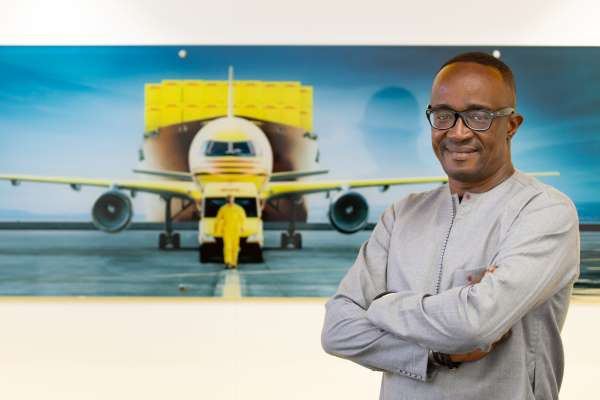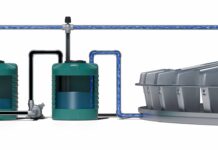By Amadou Diallo, CEO of DHL Global Forwarding Middle East & Africa
Over the last two years, the logistics and supply chain industry has been subjected to the Covid-19 ‘stress test’. Grappling with the worst pandemic in modern history, border closures, and lockdowns, logistics heroes went above and beyond the call of duty to ensure critical shipments of personal protective equipment (PPE), medical supplies, food, and vaccines reached communities around the world. As we kick off 2022, the pandemic continues to impact the globe, with more countries implementing new rounds of regional lockdowns as new virus mutations are reported.
Despite these challenges, DHL’s Global Connectedness Index found that trade in goods has surged to well above pre-pandemic levels, powerfully supporting the global recovery even as capacity challenges and trade tensions persist. The pandemic also revealed longstanding vulnerabilities that demand attention as we enter 2022.
Supply chain sustainability reaches African shores
A key buzzword within our 2021 logistics and delivery trends predictions, sustainability will still feature heavily in 2022. Consumers are increasingly expecting brands to be environmentally responsible – from their sustainable packaging to their emissions – and businesses are waking up to the financial benefits of reducing waste along their supply chains.
One of the biggest carbon-offenders along the e-commerce supply chain is transportation: according to Boston Consulting Group, transport-related activities account for 11% of global greenhouse gas emissions. To counter this, the adoption of green vehicles is becoming more widespread, with several African governments and the private sector embracing e-mobility. Kenya and Ethiopia have also expressed interest in incentivizing electric vehicle (EV) uptake.
The increased use of electric vehicle solutions in Africa is a timely initiative to decarbonize transport and improve air quality in African cities. Private companies are also driving progress by introducing EV production targets, with logistics companies and ride-sharing services converting fleets to EVs.
Consequently, DHL aims to electrify 60% of its last-mile deliveries and have 80,000 e-vehicles on the road by 2030, as part of a group-wide target to reduce all logistics emissions to net-zero by 2050. In August 2021, DHL made aviation history by ordering 12 fully electric Alice eCargo planes from aircraft manufacturer Eviation.
This year, DHL Global Forwarding started offering sustainable marine fuel for LCL and FCL shipments. Be it sustainable aviation fuel (SAF) in air freight, Bio-LNG and electric drives in road transport, or sustainable marine fuel (SMF) in ocean freight – the greater the demand, the greater the diversity of solutions and supply.
Creating resilient supply chains in 2022
Global supply chains faced unprecedented pressures last year, grappling with a shortage of shipping containers, cargo space, workers, and raw materials. Tightened border controls and global inflation, with backlogs and delays at key transit ports across the world, add to the challenges, which can be expected to continue in 2022.
As businesses increasingly pivot to e-commerce, they need agile and flexible supply chains to stay competitive and adapt to market disruptions in real-time. In times of unpredictable demand, businesses need elastic logistics – that can quickly expand or shrink, enabled by artificial intelligence (AI) and analytics that can predict upcoming demand surges.
With social distancing in force, we expect increased adoption of AI in the warehouse to automate key picking, packing, and inventory processes, reduce turnaround times, move shipments faster, and allow e-commerce businesses to remove items from customers’ visibility when stocks run too low. Elastic logistics enables supply-led decisions, saving costs, reducing wastage, and ultimately, they could be the differentiator in a highly competitive e-commerce sector.
With digital services such as DHL’s digital customer platform, myDHLi, e-commerce businesses can know where their shipments are and share the status with colleagues or partners at every point in the transport chain. This allows immediate action if needed and eases planning. Supply chains can thus be up and running even in times of crisis.
Autonomous vehicles for the socio-economic development of Africa
Global driver shortages are expected to worsen in 2022, enabling the growth of the self-driving vehicle industry. In the first half of 2021, investments in autonomous trucking companies reached US$5.6 billion. However, widespread adoption remains elusive in the mid-term future. Some have identified opportunities to explore forklifts and swap bodies, while others have pursued last-mile delivery rovers. Currently, the technology is not perfect, and almost all solutions require a human to be on standby for legal, safety, and operational reasons.
Currently, around 60% of the African continent’s population lacks access to a supporting infrastructure needed to connect the continent’s logistics framework. However, the proven efficiency and sustainability of drone-based logistics networks in East Africa are making good ground in closing this gap to help foster Africa’s socio-economic development.
E-commerce – still booming
Over the past year, there’s been a 40% year-on-year increase in overall app installs. The recent boom in e-commerce is expected to continue at speed in 2022, with worldwide retail e-commerce sales forecast to hit US$5.4 trillion.
The e-commerce boom and rising customer expectations are also expected to lead to the growth of autonomous and automated robotic solutions in warehouses – saving businesses time and money. In fact, the global autonomous warehouse robotics market is expected to almost double in size by 2025, reaching US$27.2 billion. Automated storage and retrieval systems in warehouses help find, pick, and move inventory around more quickly, so e-commerce businesses can meet tight delivery deadlines for customers.
DHL has announced plans to take on 2,000 new warehouse robots this year – to cope with rising e-commerce demands and consistently optimize our supply chains.
As they say, the only constant is change. As we look toward the future, multiple forces of change – including accelerated digitalization and the Covid-19 pandemic – will continue to shape the logistics industry through 2022 and beyond.









